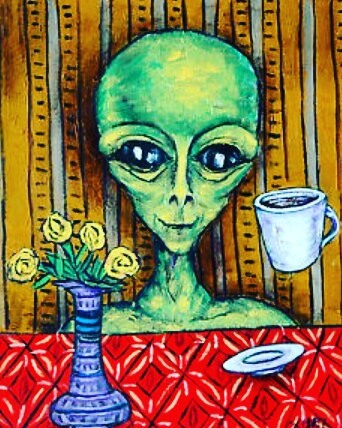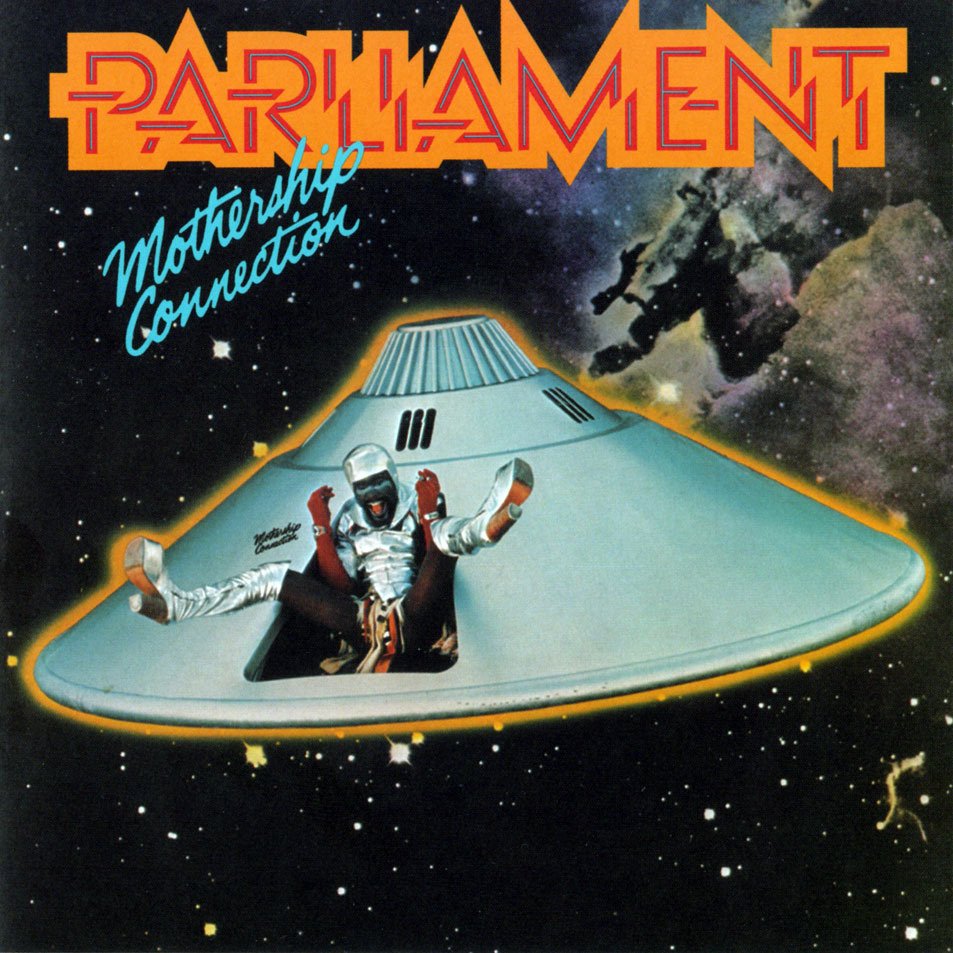
Good Morning POU!

The Afrofuturist approach to music was first propounded by Sun Ra. Born in Alabama, Sun Ra’s music coalesced in Chicago in the mid-1950s, when together with The Arkestra he began recording music that drew from hard bop and modal sources, but created a new synthesis, which also used Afrocentric and space-themed titles to reflect Ra’s linkage of ancient African culture, specifically Egypt, and the cutting edge of the Space Age.

Sun Ra (born Herman Poole Blount, legal name Le Sony’r Ra; May 22, 1914 – May 30, 1993) was an American jazz composer, bandleader, piano and synthesizer player, poet and philosopher known for his experimental music, “cosmic” philosophy, prolific output, and theatrical performances. For much of his career, Ra led “The Arkestra”, an ensemble with an ever-changing name and flexible line-up.
Born and raised in Alabama, Blount eventually became involved in the Chicago jazz scene during the 1940s. He soon abandoned his birth name, taking the name Sun Ra (after Ra, the Egyptian God of the Sun) and developing a complex persona and mythology that would make him a pioneer of Afrofuturism: he claimed he was an alien from Saturn on a mission to preach peace, and throughout his life he consistently denied any ties to his prior identity.
In 1936, Blount was awarded a scholarship to Alabama Agricultural and Mechanical University. He was a music education major, studying composition, orchestration, and music theory. He dropped out after a year.
Trip to Saturn
Sun Ra soon left college because, he claimed, he had a visionary experience as a college student that had a major, long-term influence on him. In 1936 or 1937, in the midst of deep religious concentration, Sun Ra claimed that a bright light appeared around him, and, as he later said:
My whole body changed into something else. I could see through myself. And I went up… I wasn’t in human form… I landed on a planet that I identified as Saturn… they teleported me and I was down on [a] stage with them. They wanted to talk with me. They had one little antenna on each ear. A little antenna over each eye. They talked to me. They told me to stop [attending college] because there was going to be great trouble in schools… the world was going into complete chaos… I would speak [through music], and the world would listen. That’s what they told me.
So thoroughly committed to his otherworldly vision, he maintained that he was from the planet Saturn throughout much of his professional life, and dressed his band in glittery Egyptian pharaoh crowns and pan-African hats and togas.

His widely eclectic and avant-garde music would eventually touch on virtually the entire history of jazz, ranging from swing music and bebop to free jazz and fusion, and his compositions ranged from keyboard solos to big bands of over 30 musicians. From the mid-1950s until his death, Ra led the musical collective The Arkestra (which featured artists such as Marshall Allen, John Gilmore and June Tyson throughout its various iterations). Its performances often included dancers and musicians dressed in elaborate, futuristic costumes inspired by ancient Egyptian attire and the Space Age.
Sun Ra: Space is the Place (1974) opening titles
Though his mainstream success was limited, Sun Ra was a prolific recording artist and frequent live performer, and remained both influential and controversial throughout his life for his music and persona. He is now widely considered an innovator; among his distinctions are his pioneering work in free improvisation and modal jazz and his early use of electronic keyboards and synthesizers. Over the course of his career, he recorded dozens of singles and over one hundred full-length albums, comprising well over 1000 songs, and making him one of the most prolific recording artists of the 20th century.
For many years, Ra and his bandmates lived, worked, and performed in Philadelphia while touring jazz and progressive music festivals world-wide. As of 2016, the band is still composing and performing, under the leadership of Marshall Allen. Ra’s film Space Is the Place shows The Arkestra in Oakland in the mid-1970s in full space regalia, replete with science-fiction imagery as well as other comedic and musical material. Following Sun Ra’s death in 1993, the Arkestra continues to perform.

Afrofuturist ideas were taken up in 1975 by George Clinton and his bands Parliament and Funkadelic
with his magnum opus Mothership Connection and the subsequent The Clones of Dr. Funkenstein, P-Funk Earth Tour, Funkentelechy Vs. the Placebo Syndrome, and Motor Booty Affair. In the thematic underpinnings to P-Funk mythology (“pure cloned funk”), Clinton in his alter ego Starchild spoke of “certified Afronauts, capable of funkitizing galaxies”.
Funk is not just a type of music. It’s a state of being, and a technicolor, utopian universe unto itself. It’s “home of the extraterrestrial brothers,” as the sonorous, liquid-tongued voice of a radio DJ explains in introduction to the seminal 1975 funk album “Mothership Connection” by Parliament.
“Do not attempt to adjust your radio, there is nothing wrong,” the DJ croons. “We have taken control as to bring you this special show. We will return it to you as soon as you are grooving.”
The now-captive listener is exhorted to free herself from her earthly existence with the help of something called “P-Funk.” What follows is a 40-minute, downbeat-driven trip (possibly drug-induced) through a cosmic soundscape overrun with saxophones, falsetto-sung hooks, and puns involving the word “funk.”
The music is soothing in its repetitiveness, but not without an edge. “I want my funk uncut,” sings the background chorus on the first track. It’s a psychedelic concoction of good vibes rooted in a raw, relentless groove.
What is P-Funk? “Pure funk,” says Parliament’s George Clinton. “This is as funk as you’re gonna get it.” And what is funk? “Funk is anything you need to be when it needs to be that.”
Other earlier musicians typically regarded as working in or greatly influenced by the Afrofuturist tradition include reggae producers Lee “Scratch” Perry and Scientist, hip-hop artists Afrika Bambaataa and Tricky, electronic musicians Larry Heard, A Guy Called Gerald, Juan Atkins, Jeff Mills, Newcleus and Lotti Golden & Richard Scher, electro hip hop producer/writers of Warp 9‘s “Light Years Away“, a sci-fi tale of ancient alien visitation, described as a “cornerstone of early 80’s beatbox afrofuturism”.
Tomorrow: Current musicians in the afrofuturistic world
